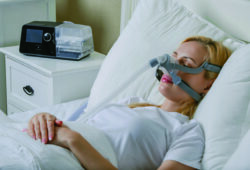While cleaning and sanitation have always been a crucial focal point in hospitals, the novel coronavirus has brought the importance of these tasks into the spotlight. Hospital staff within environmental service (EVS) departments are working as hard as ever to maintain their high standards.

“There are many other contagions within the environment,” says Matt Oglesby, Director, Environmental Services, HealthTrust Supply Chain. “We have MRSA, C. diff [Clostridioides difficile] and other bacteria that our EVS teams are working hard to get rid of every day.”
Still, COVD-19 has forced EVS departments to examine their procedures and adjust where needed.
Precautions already in place
COVID-19 hasn’t meant a lot of change to how hospital EVS departments operate at their core, says Oglesby. The precautions they followed before the pandemic already included guidance that covered safety guidelines for EVS workers and patients to protect them from the coronavirus.
“If a patient comes into our hospital and they’re on contact isolation, or if they’re on airborne isolation, we have a policy and a procedure for that. The chemicals and processes that we have in place for those types of isolation are effective against COVID as well.”
Doubling down on good practices
When the pandemic hit the U.S., EVS departments worked to ensure their policies and procedures would keep people safe in light of the new challenges. First up: ensuring the disinfectants in use were products recommended by the Centers for Disease Control and Prevention (CDC) against COVID-19 and securing their supply. Next came making sure staff were up to date on product use. “One thing we did was re-educate teams on the appropriate dwell time for each chemical, which means how long surfaces need to stay wet to be effective against emerging pathogens,” says Oglesby.
In addition, the frequency of cleaning in public areas has increased, especially high-touch surfaces such as doorknobs and light switches. Cleaning efforts are also more visible to the public via increased signage, so visitors and patients understand the measures in place to ensure their safety.
However, this increase in cleaning volume hasn’t necessarily meant a significant need for more cleaning staff, according to some sources. Some facilities use new technology, such as electrostatic sprayers, to increase cleaning efficiency. Other facilities have managed the workload by moving staff from clinics or elective procedures (that were on reduced hours or closed down because of COVID).

“Office and clinic visits went way down, and at times, we were only allowing one visitor per patient in the building. So we would just move current employees to other spaces to help with COVID needs,” says David Maffeo, Senior Director of Support Services at Boston Medical Center (BMC). “We also partnered with another cleaning company to utilize about 10 additional employees to help with COVID room response and turnaround at the peak of the pandemic in Boston,” he adds.
HCA Healthcare dedicated a specific EVS staff member to each COVID unit. This staff person does not work elsewhere in the hospital and is cohorted with those patients.
Collaboration & communication
Keeping facilities clean and safe is a team effort, with EVS working hand in hand with infection control and other teams.
For example, at HCA Healthcare, the Clinical Operations and Infection Prevention teams created a matrix for facilities that outlined which precautions patients require to keep hospital workers safe. This clear information and education has helped to put staff at ease, so they can do their job safely and without fear.
At BMC, historically, housekeeping huddled three times a day to keep staff informed on necessary information. “We talk about cleaning protocols, social distancing and PPE [personal protective equipment],” says Maffeo. “Since we do these huddles anyway, COVID just became the new topic.”
Oglesby believes the increase in the cleaning of high-touch areas and the heightened awareness of cleanliness that COVID-19 has brought is the new baseline. “While our teams were doing an excellent job of keeping our facilities safe prior to the pandemic, increased cleaning is never a bad thing,” he says. “More than ever, there’s a focus on housekeepers truly being heroes and keeping people safe by making sure our facilities are clean.”
Visit the HealthTrust Member Portal for more information about EVS products and services on contract.
Share Email COVID-19, Facilities Management, Infection Prevention, On-contract service, Q1 2021





